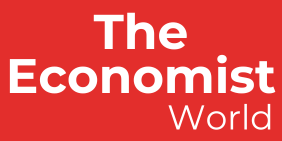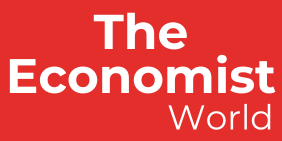NEW YORK: Global stock markets and oil prices plunged nearly 8% on Friday, heading for their lowest close since the middle of the pandemic in 2021 as China struck back against US President Donald Trump’s tariffs and worries mounted about a prolonged global trade war.
The Nasdaq Composite was headed toward a bear market, while the pan-European STOXX 600 index confirmed it was in a correction as the trade war fanned global recession concerns.
Since Trump unveiled his tariffs late on Wednesday, S&P 500 companies have lost over $4 trillion in stock market value, a record two-day decline for the benchmark, exceeding a two-day loss of $3.3 trillion in March 2020, when the pandemic ripped across global markets, according to LSEG data compiled by Reuters.
Some investors fled to the safety of government bonds, while the dollar recovered from Thursday’s weakness.
Responding to Trump’s tariffs, China on Friday said it would impose additional levies of 34% on American goods, confirming investor fears that a full-blown global trade war is under way.
“It’s sort of the worst fears of where the tariff program was headed,” said Rick Meckler, partner at Cherry Lane Investments, a family investment office in New Vernon, New Jersey.
“For those investors who were sure it was just a negotiation – while that still may be true at some point – it’s getting awfully deeper into the detail and more dangerous for companies.”
Data showing the US economy added far more jobs than expected in March did little to brighten the mood.
Federal Reserve Chair Jerome Powell said in remarks at a business journalists’ conference in Arlington, Virginia, that Trump’s new tariffs are “larger than expected” and the economic fallout, including higher inflation and slower growth, likely will be as well.
Meanwhile, Oil prices plunged nearly 8%, heading for their lowest close since the middle of the pandemic in 2021.
Brent futures dived $4.68, or 6.67%, to $65.46 a barrel by 12:43 p.m. ET (1443 GMT). US West Texas Intermediate crude futures lost $5.07, or 7.6%, to $61.88.
At the session low, Brent fell to $64.03 and WTI hit $60.45, the lowest in four years. Both benchmarks were on course for their biggest weekly losses in percentage terms in more than two years.
“To me, this is probably close to fair value in crude until we get some sort of indication of how much demand has actually been reduced by,” said United ICAP Energy Specialist Scott Shelton.
“My opinion is we probably will end up in the mid to high $50s in the near term for WTI, in a very violent way,” Shelton said, warning that demand would suffer under the current market circumstances.
Trump’s new tariffs are “larger than expected” and the economic fallout including higher inflation and slower growth likely will be as well, Federal Reserve Chair Jerome Powell said on Friday in remarks that pointed to the potentially difficult set of decisions ahead for the US central bank.
OPEC+ INCREASES
Further pressuring oil prices, the Organization of the Petroleum Exporting Countries and allies in OPEC+ decided to advance plans for output increases. The group now aims to return 411,000 barrels per day (bpd) to the market in May, up from the previously planned 135,000 bpd.


